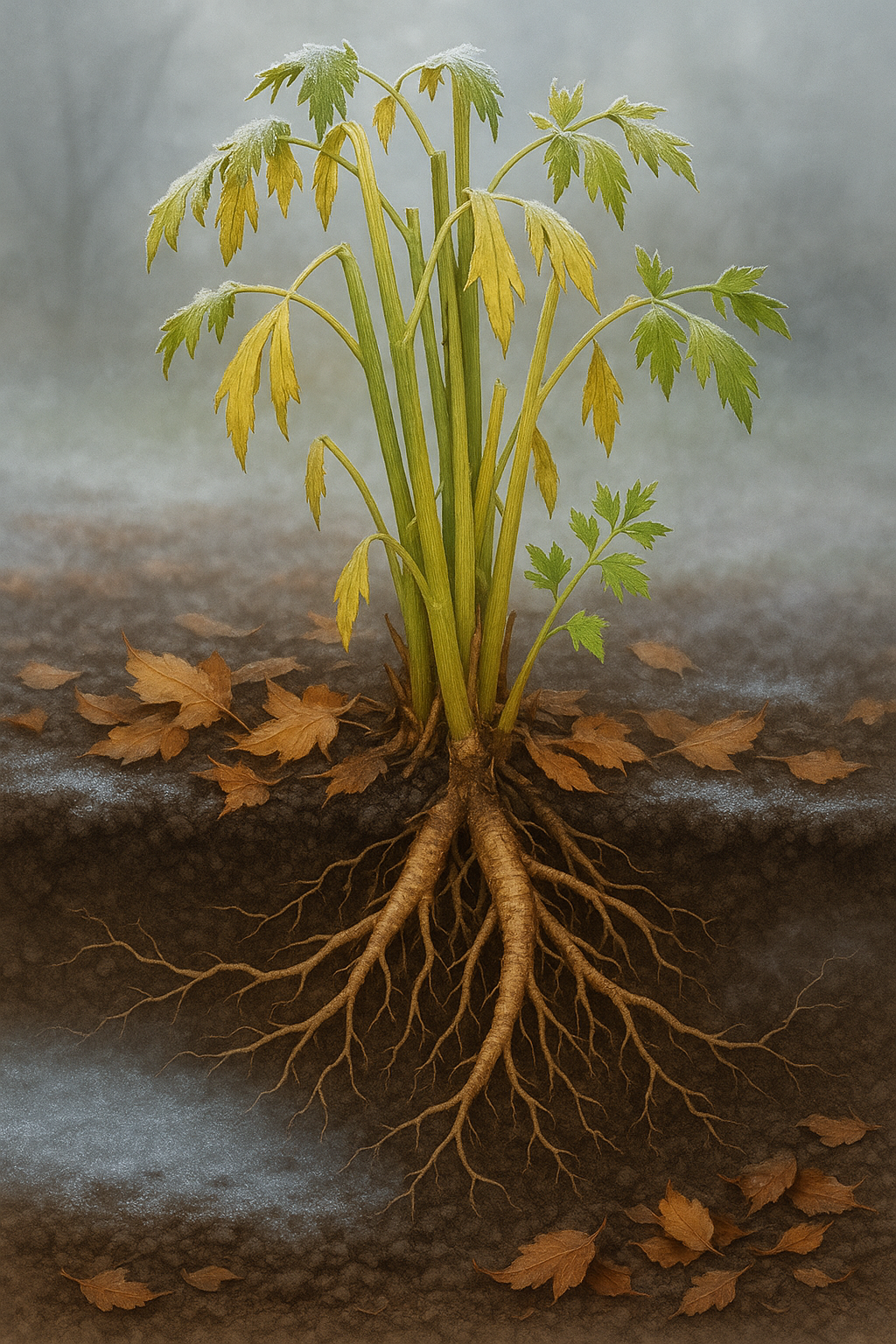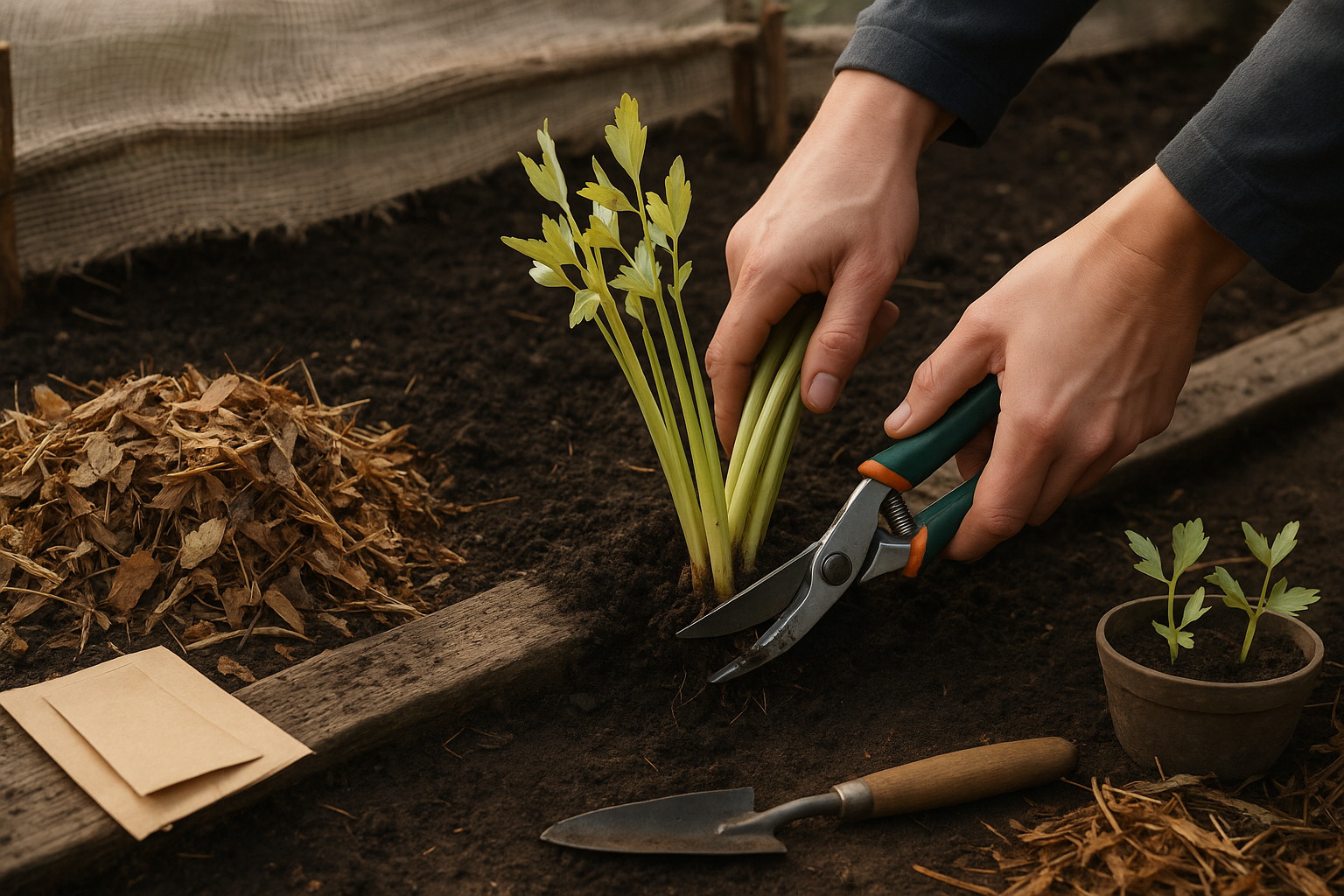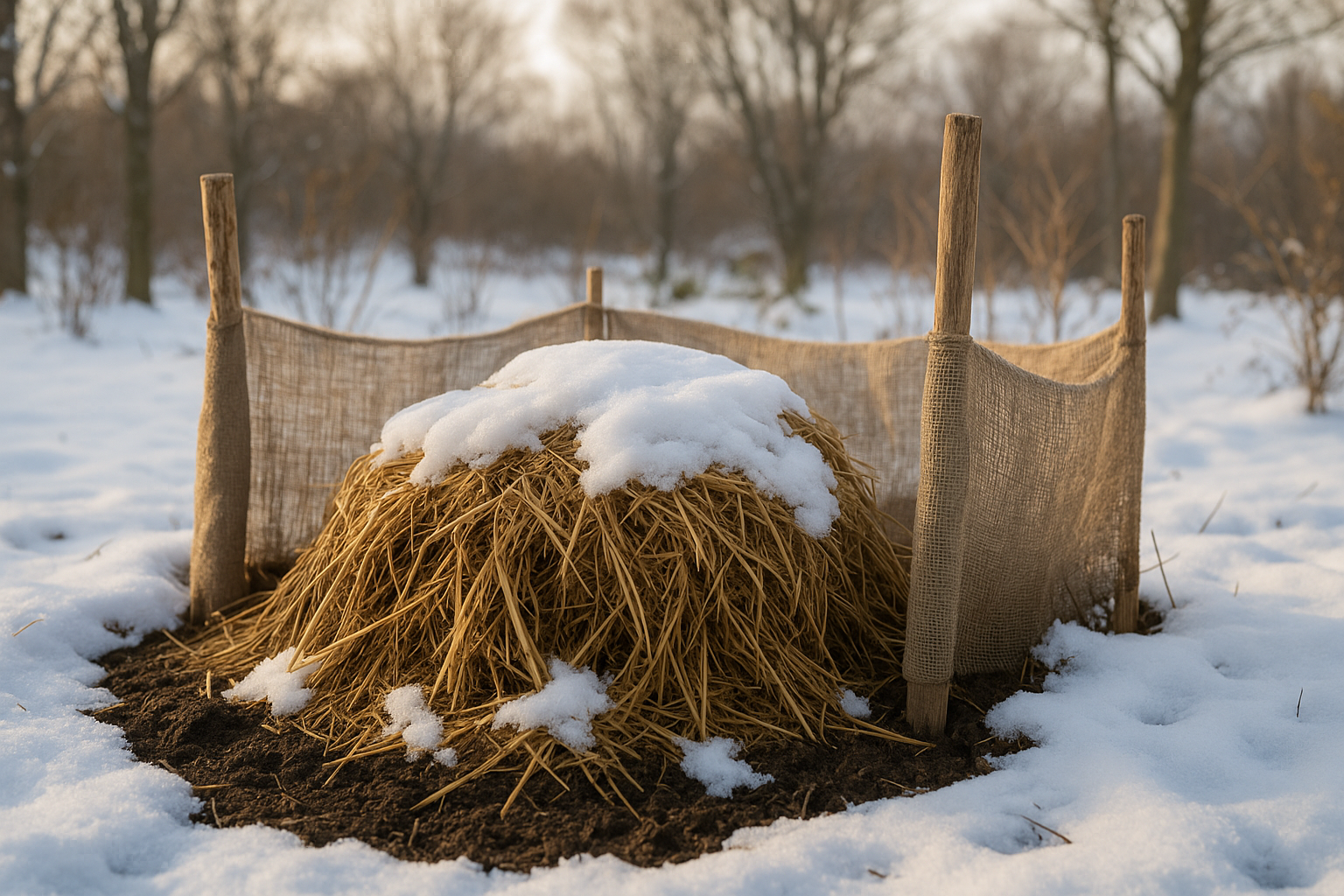Introduction to Lovage in Cold Climates
For herb enthusiasts eager to expand their gardens beyond the usual suspects, growing lovage in cold climates is a rewarding challenge worth tackling. Known as a robust perennial herb, lovage is celebrated for its celery-like flavor and versatility in both kitchens and apothecaries. From soups to herbal infusions, it’s a plant that offers so much value—if you can keep it thriving year-round.
But even tough herbs face obstacles. In colder regions, lovage often battles harsh winter frosts, compacted soil, and fluctuating moisture levels that can threaten its health and survival. If you’ve watched the foliage wilt away after a hard freeze or struggled to get your plants to bounce back in spring, you’re not alone.
Fortunately, with the right strategies, you can help your lovage weather the winter and emerge even healthier when warmer temperatures return. In this article, we’ll share proven winter care tips, practical protection strategies like mulching and using cold frames, and methods to encourage vigorous regrowth as the snow melts. Whether you’re a seasoned grower or just starting out, you’ll find actionable advice to keep your lovage thriving—no matter how harsh the climate gets.
Understanding Lovage’s Winter Behavior

Lovage is a hardy perennial herb that naturally adapts to cold climates, including USDA zone 5 and even colder areas. It has a built-in dormancy cycle that helps it survive harsh winters. As fall progresses and frost becomes frequent, you’ll notice the lovage’s tall, leafy stems start to yellow and droop—this above-ground dieback is completely normal.
Don’t be alarmed if, by late autumn, the plant appears to die back to the ground. While all visible growth safely withers away, the plant’s energy shifts to its robust root system underground. Lovage roots act like a survival bank, storing nutrients and ensuring the plant’s survival through freezing temperatures and snowy conditions.
This period of dormancy typically starts with the first killing frosts—usually in late October or November in zone 5. During winter, there’s no need to dig up or insulate established plants unless a deep freeze is expected in a particularly harsh winter; a simple mulch layer helps insulate the roots just in case.
Come early spring, as days lengthen and the soil begins to warm, the roots awaken from their dormant phase. You’ll spot bright green shoots piercing the soil, often as early as late March or April, depending on local weather. Regular spring rains and rising temperatures act as nature’s signal, prompting lush new growth.
Even if the old stalks look lifeless, patience pays off—cut away any dead material, and your lovage will reward you with a fresh, vigorous start each season.
Preparing Lovage for Winter Outdoors

Getting your lovage plants ready for winter outdoors is simple and effective when you follow a few key steps. Start by cutting back the stems to just a few inches above soil level once frosts have blackened the foliage, typically in late fall. Use clean, sharp pruners to avoid spreading disease.
Remove all dead plant material and any weeds from around the base of each plant, as this debris can harbor pests and fungi over winter.
Next, focus on mulching to insulate the roots. Apply a generous 3 to 4-inch layer of organic mulch such as straw, shredded leaves, or well-rotted compost over the root zone—this blanket helps keep soil temperatures stable and reduces the risk of freeze-thaw damage. Mulch should extend at least a foot from the base of the plant in all directions, but keep it about an inch away from direct contact with stems to prevent rot.
The ideal time to mulch is just after the ground has cooled but before it’s frozen solid, usually around late November in most climates.
For lovage in especially windy or exposed spots, consider stacking mulch a bit higher (up to 6 inches) and using burlap screens, old garden fencing, or even a circle of stakes wrapped with fabric to act as a windbreak. Secure loose mulch with light netting or weigh it down with evergreen boughs to prevent it from blowing away.
By keeping lovage roots cozy and protected, you’ll help ensure a strong, healthy plant ready to burst forth in spring with minimal winter losses or pest issues. Remember to remove excessive mulch and barriers in early spring as temperatures warm, letting new shoots grow freely.
Effective Watering and Fertilization in Winter
As winter arrives and daylight decreases, most houseplants and garden plants slow their growth or go completely dormant, meaning their need for water drops significantly. During this period, it’s crucial to cut back on watering—often as little as once every 2-4 weeks is plenty. Always check the top inch of soil before adding more water.
Using room-temperature water and allowing excess to drain helps avoid waterlogging, which is a common cause of root rot in winter. Fertilizer should generally be avoided from late autumn onward, as plants aren’t actively growing and can’t use the nutrients. Applying fertilizer during dormancy can actually harm roots and encourage weak, spindly growth once warmer weather returns.
If you’d like to give your plants a nutritional boost, do it in early fall before temperatures start to drop—not during the coldest months. Throughout winter, be vigilant for signs of trouble like mushy stems, yellowing lower leaves, or soil that smells sour. These are red flags for rot or fungal outbreaks, which thrive in cold, damp conditions.
To keep things healthy:
- Ensure pots have drainage holes.
- Use a well-aerated potting mix.
- Never let plants sit in saucers of leftover water.
Remember, less is more when it comes to caring for your indoor jungle during winter—the right care now means a healthier, lusher resurgence in spring.
Indoor Options
Growing lovage indoors during winter is a great way to keep your herb supply thriving year-round, especially when frosty weather shuts down your garden. Start by choosing a large, deep container—at least 12 inches wide and equally deep—since lovage develops robust roots.
Use a rich potting mix with good drainage to prevent soggy soil, and consider mixing in compost for an extra nutrient boost. Place your pot near a south-facing window where it can get at least 6 hours of direct light daily. If sunlight is limited, supplement with a full-spectrum grow light, positioning it 6–8 inches above the foliage for 12–14 hours each day.
Water your lovage when the top inch of soil feels dry, but avoid overwatering, as it doesn’t like wet feet. If you’re bringing outdoor lovage indoors in the fall, dig up healthy, mature plants with a good root ball before the first frost hits. Trim the foliage back by about one-third to reduce stress and help the plant adjust.
Allow the plant to acclimate in a cool, shaded outdoor spot for a few days before moving it inside. When spring arrives and frost threats have passed, gradually reintroduce your lovage to outdoor conditions by placing the pot outside for a few hours a day, increasing exposure over the course of a week.
With this approach, you’ll enjoy fresh lovage leaves throughout winter and give your plants a head start when warm weather returns.
Dealing With Common Winter Problems
Winter brings a unique set of challenges for gardeners, with issues like root rot, pests lurking in mulch, and the damaging effects of frost heave threatening your plants’ health.
Root rot is common in soggy, poorly draining soil—look for yellow, wilted leaves or a musty smell near the roots as early warning signs. To combat this, improve drainage by mixing in compost or sand and avoid heavy winter watering.
Mulch can harbor pests such as slugs and earwigs that nestle in for warmth, so gently lift mulch layers with a hand rake every couple of weeks to spot any intruders. But avoid digging too deeply, which could disturb delicate roots.
Frost heave, which occurs when freezing and thawing soil lifts plants out of the ground, is another hazard. Check for exposed roots after cold snaps, and if you notice any, carefully press the plants back in place and add an extra mulch layer for insulation.
When inspecting your garden during winter, do it on milder days when the ground isn’t frozen solid. Gently brush away surface leaves and debris with your hand rather than using tools, which reduces the risk of root damage. A quick visual check for uprooted or tilting plants can also help catch problems early without disturbing dormant root systems.
By staying observant and using a light touch, you can protect your garden from winter’s most common pitfalls and set the stage for healthy spring growth.
Spring Recovery
As winter fades and the first hints of spring appear, it’s time to give your lovage plants a fresh start. Once overnight frosts have reliably passed and new shoots begin to poke through the soil, gently remove any winter mulch to let sunlight warm the roots and fresh air circulate.
Look for signs of healthy growth: deep green stems and leaves emerging from the crown indicate your plant survived the cold well. Use clean shears to trim away any brown, dead stems at the base, taking care not to damage new sprouts.
Lovage wakes up hungry—when you see four to six inches of new growth, feed your plant with a balanced, organic fertilizer or a handful of well-rotted compost, working it lightly into the soil around the base.
Early spring is also the ideal time to ensure your lovage is well-watered but not soggy, helping it establish strong roots for the season ahead. A light layer of fresh mulch after feeding can help retain moisture and suppress weeds.
By setting the stage now with these simple steps, you’ll encourage lush, vigorous growth and can look forward to your first harvest as soon as the stalks reach about a foot tall.
Conclusion & Seasonal Lovage Care Reminders
To keep your lovage thriving through harsh winters, mulch heavily around the base with straw or leaves to insulate the roots from freezing temperatures and erratic thaws. Prune spent stalks down to the ground in late fall and remove any debris to discourage pests and disease. Continue to check for signs of rot or overwintering pests during any winter warm spells.
These small but crucial efforts ensure lovage returns strong each spring and can keep producing for many years. Staying attentive to your plant’s needs each season keeps it vigorous and reliable in your garden.
For deeper guidance on perennial herbs, check out books like The Complete Herb Gardener or explore trusted blogs such as The Herb Society of America for season-by-season advice.
